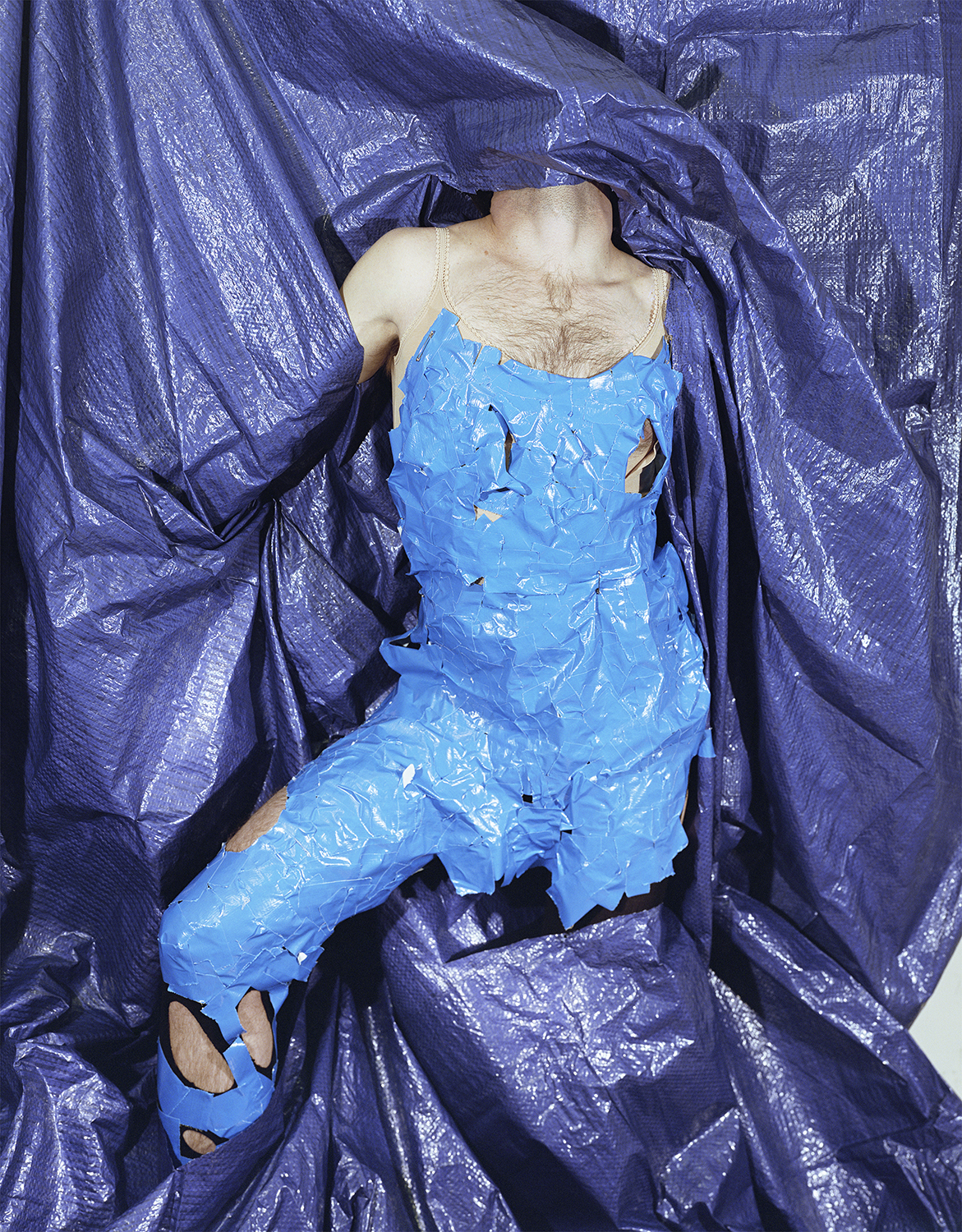Women are overlooked far too often in photography. How can we continue to combat this erasure? My answer is this column, “Woman Seeing Woman.” While it’s just the start of solving this problem, I, a female writer and photographer, hope to celebrate the astoundingly powerful female voices we have in photography by offering a glimpse into their work.
From the age of 12, and perhaps even before, the photographer Whitney Hubbs’s work has been rooted in disruption. She understood from a young age that the male gaze was being funneled into her, though she didn’t quite have the words for it at the time. Influenced by the Riot Grrrl movement, she sought to rebel against that gaze in the work she made from then on. “I was shown Edward Weston in my first photo class in ninth grade, and then I started using myself,” she says. “Like a punk Francesca Woodman.”
Videos by VICE
After graduating high school, Hubbs shaved her head and moved from her native Los Angeles to St. Louis, Missouri, on a Greyhound bus. She lived in punk houses there, where she also worked at a community-run record store and zine emporium, as well as in the Bay Area, and in Portland, Oregon. In Portland in particular, she fashioned a darkroom in the house’s basement, made a camera-lending library, taught people how to make pictures, and organized art shows.
Living and taking college classes in Portland was inexpensive at the time, Hubbs says, so she took a color photography class at night. After two years, her professor, John Mullen, told her she could go to art school. She didn’t know such a thing was possible when she graduated high school in 1995. “I didn’t know I could go to art school, but I knew when I graduated I could keep up my involvement with Riot Grrrl,” she says. She applied to one college, California College of the Arts, and got in. There, she studied with photographers like Jim Goldberg and Larry Sultan. Graduating in 2005, she went on to get her MFA in 2009 at the University of Southern California, after studying with the likes of Catherine Opie and James Welling.
Her Riot Grrrl roots traveled with her. “After undergrad, I got frustrated with the history of men using the female body and the female identity. It was a different time, and my history of photo class was basically men that I was learning about. I was like, ‘Where do I fit into this? Where do all my friends fit into this? How can I be a feminist and like something that’s male dominated?’ It took me five years for it to sink in and express it and regurgitate it out,” she says.

One of the projects Hubbs found herself working on to address the male gaze was 2016’s Body Doubles, in which she photographed women in various states of undress, their faces obscured by a variety of textured papers and fabrics in bold colors. The series was her way of showering off the male gaze by looking at women through her own eyes. “If I was raised on sneaking looks at Playboy magazine or sneaking looks at porn covers in the video store, fashion, Riot Grrrl, and Edward Weston, how do you come to terms with all those images that you’ve seen at a very malleable age and innocent age?” Hubbs says. “All those are the male gaze, other than the Riot Grrl stuff… I ask a lot of questions, but I don’t necessarily need an answer, so it was like, ‘How can I explore this and ask these questions, and what would this look like if I took pictures of women?” Her work from this series is currently on view in Cincinnati’s FotoFocus Biennial—the country’s largest lens-based art biennial—at the Art Academy of Cincinnati’s Convergys Gallery.
The Madeleine Cake (2017) exhibition at the Situations Gallery in New York with the artist Alika Cooper explored a similar theme to Body Doubles. Hubbs exhibited self-portraiture from two decades of work as well as an image of a mannequin wrapped in black velvet. “I did these self-portraits and then put [them] out in the world because I was given the opportunity to, and it was a way for me to be like, ‘If I’m taking pictures of women, I should take pictures of myself and see how that feels. Is it about performance, or is it about the female body?”
Hubbs now teaches photography classes at Alfred University in western New York. In her current work, she hopes to blend her backgrounds in Riot Grrrl, academia, and teaching. “It’s always fun to marry the art school me, the professor me, and the Riot Grrrl me,” she says. “How can they all work together in an image? I don’t know, and that’s what I’m always asking.” She is working on a book of black-and-white photographs while also playing with motion and sculpture. Ultimately, she always wants her work to continue to be challenging to her and make her uncomfortable. “I just need to keep having something feel new to me because sometimes life gets really boring,” she says. “How can I disrupt this? How can I be surprised? Disrupting my own norms, that’s all that it is.”










Sign up for our newsletter to get the best of VICE delivered to your inbox daily.
Follow Elyssa Goodman on Twitter.
More
From VICE
-

Collage by VICE -

Collage by VICE -

Image: Dream Recovery/Edit by VICE -

Collage by VICE
